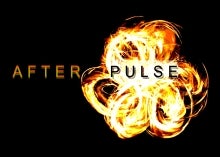Vigils and Memorials: Evocations of Trauma

Facebook is such a strange medium through which to encounter tragedy and horror. Already formatted for minimal engagement, a blast of moving image and occasionally sound as one scrolls through the happenings of last night. Visiting my partner in Dallas, waking up to the news of the hostage situation, the heroics, the increasingly bizarre narrative about the assailant, and overwhelming stories of those subjected to such violence and fear, our exploration of disjointed iPhone videos and repetitious news footage was interrupted by a text from my partner’s friend. “My friend Juan was at Pulse last night, and he’s not texting me back.” When we joined the vigil and quiet march through downtown Dallas later that day, we learned that both Juan and his partner Christopher had been killed; they were planning to marry. Pulse was close to us, and impossibly distant, in that last undelivered text message asking “Are you ok?”
My nightlife work has mostly explored heteronormative social dance spaces, in which my queerness is less important for finding an oppositely gendered partner than how well I can navigate the choreography of a Cape Breton square dance. While I was always aware of the possibility of violence, it was precisely the cohesive, touristed insularity of the communities in which I worked that helped me feel safe. As I conformed to local expectations of whom I would dance with, I enacted a locally valued modesty. I didn’t stand out any more than I had to. At a gay bar, I knew, I would stand out even less, but with Pulse unfolding before us, that suddenly didn’t seem to matter.
What brought Pulse home to me even more acutely was that my partner and I had been out at a queer country bar the same night. When in Texas, after all. As the violence was beginning in Orlando, we were two-stepping, performing a certain kind of regional queerness far removed from the queerness so suddenly on display at Pulse. I stood out, not because I was queer, but because my non-existent boots belied my pearl snap shirt. But while my partial conformity might have mattered for fieldwork, it wouldn’t have mattered at Pulse. The unlikelihood and the inability to control for a situation like what happened Pulse made me question my nightlife ethnography, and moving this work into queer spaces. Was it safe?
I have lived in Israel, and understand a little what it is like to live with the always-palpable specter of the unexpected attack. I understand that there’s a choice to continue going about life, or barricading ourselves. We have a similar choice in fieldwork. As Pulse should continue as a living community site rather than a memorial, we should continue doing work in spaces of risk. We’ve never been completely safe doing fieldwork; even internet ethnography comes with online and offline violences. Many of us are in the business of ethnography to learn more about our world and grow closer to the people in it; risk can’t allow us to stop reaching out.





